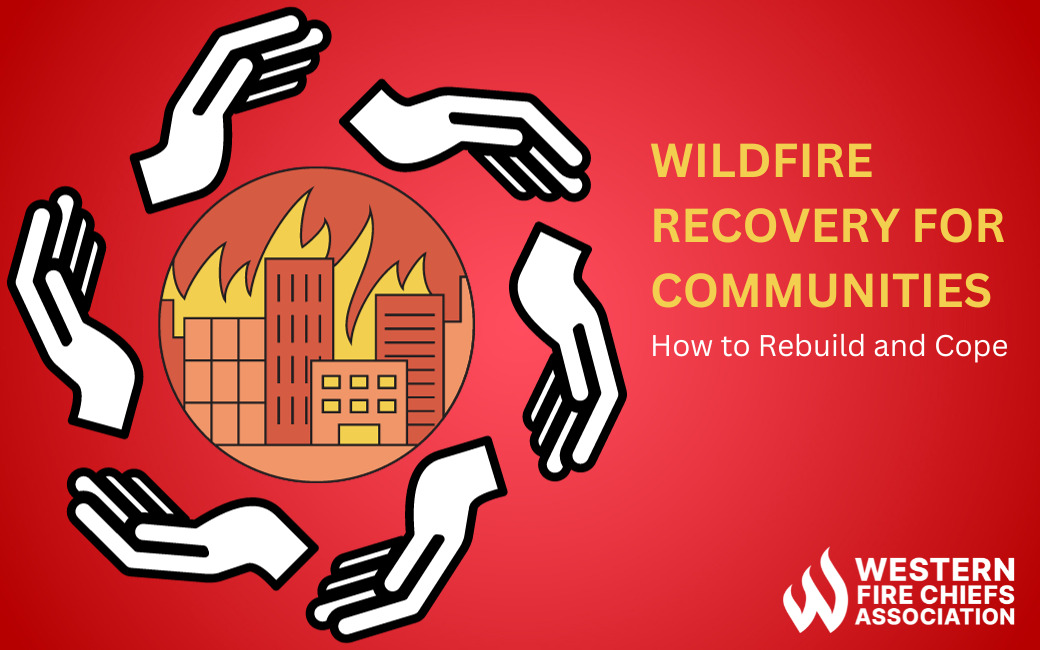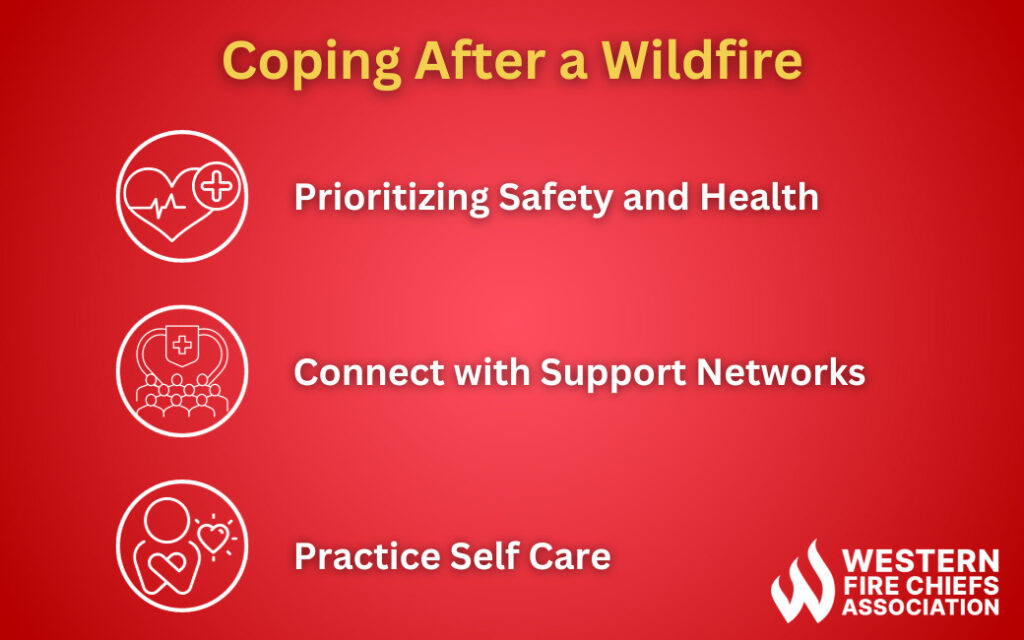Fire Pit Safety Tips
Stay safe around the campfire with tips from the Western Fire Chiefs Association. Learn essential precautions and practices for a worry-free outdoor campfire.
Explore community focused strategies for recovery, resilience, and emotional well-being as they relate to wildfire recovery with expert guidance from the WFCA.
Published:October 10, 2023
Edited:March 1, 2024

Explore community-focused strategies for recovery, resilience, and emotional well-being as they relate to wildfire recovery with expert guidance from the WFCA.
In the aftermath of a devastating wildfire, communities face the daunting task of rebuilding and coping with the aftermath. The destructive force of wildfires can leave a lasting impact on both the physical landscape and the emotional well-being of those affected. By taking proactive steps, communities can reduce the risk of future devastation and protect their residents.
After a wildfire, many factors come into play to ensure that the deployment of resources is effective and that the needs of the community are met. Here are several key elements of wildfire recovery:
Emergency Response and Safety:
Burned Area Emergency Response (BAER) takes place after a wildfire to assess immediate safety concerns and minimize further environmental and cultural damage caused by the wildfire.1
To determine the scale of damage a wildfire has caused, inspectors will enter the burned area and utilize geographic information system (GIS) mapping. This mapping helps capture the magnitude of damage done to homes and infrastructures that are required to get federal relief funds to the impacted communities.2
Community Engagement/Communication:
Holding and attending public meetings following a wildfire disaster is a vital step in the road to recovery. It allows community members to have their voices heard and key stakeholders be part of the decision-making process, thus increasing the public’s willingness to get involved in wildfire safety.3
Recovery Planning:
Short-term recovery is the process of removing debris and restoring power in the affected areas. It is important to have a cohesive long-term recovery plan to restore a community’s health and self-sustainability over a long period of time. During the creation of the long-term recovery plan, involved members should look at exposure to risk to a level that is less than what it was before the disaster.4
Infrastructure/Utilities Restoration:
Restoring vital infrastructures and utilities such as water and electricity is part of the short-term recovery process to get communities on the road to recovery.4

Wildfires can have a significant impact on an individual’s mental health. Recognizing the signs and knowing when to seek help is crucial. Here are some tips on coping after a wildfire:
Prioritizing Safety and Health:
Residents forced to evacuate their homes due to a wildfire must not return until it is deemed safe to do so by authorities. When residents can return, they are urged to use safety protective equipment such as goggles, gloves, long sleeves, pants, and masks to protect themselves from smoke and other harmful chemicals that may have entered the air during the fire.5
Connect with Support Networks:
Wildfire victims are encouraged to reach out to local, state, and federal support groups such as Access or the Red Cross to have immediate needs met. Connect with friends, family, or other wildfire survivors to help aid you in the healing process.
Practice Self-Care:
The stress that follows a wildfire can take a toll on one’s mental and physical health. Schedule time to take care of yourself by doing the things you love whether that is talking with a friend, journaling, or going on a walk.
Stay safe around the campfire with tips from the Western Fire Chiefs Association. Learn essential precautions and practices for a worry-free outdoor campfire.
Discover essential firework safety tips to ensure a dazzling display without accidents. Learn how to celebrate responsibly with expert guidance from WFCA.
Explore the role of AI in wildfire prediction with guidance from the WFCA. Learn how advanced algorithms and data analytics enhance early detection and response.